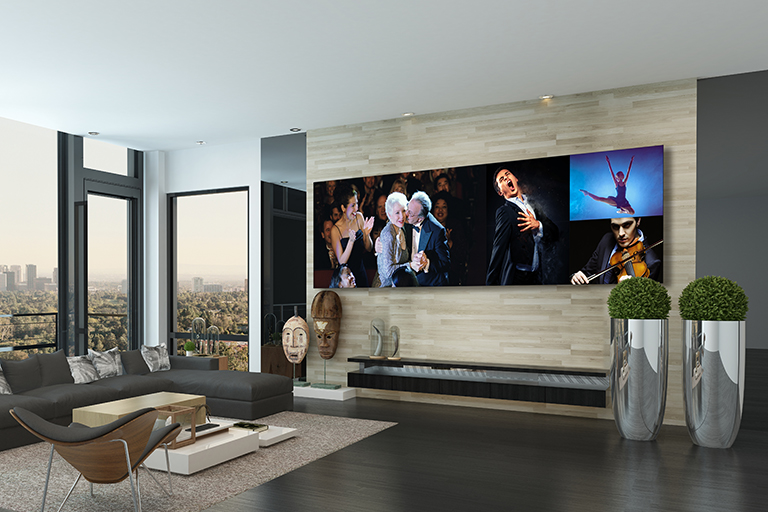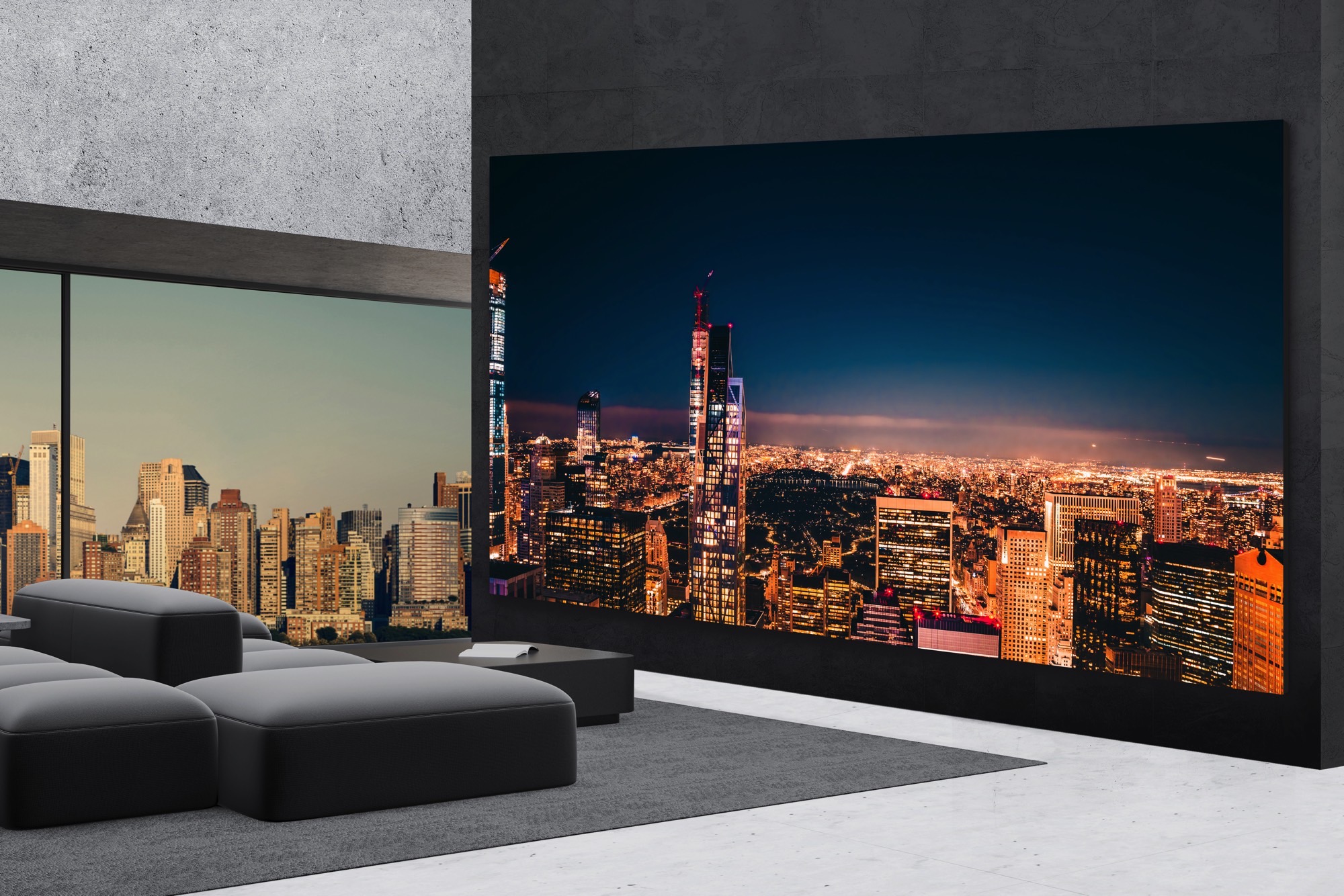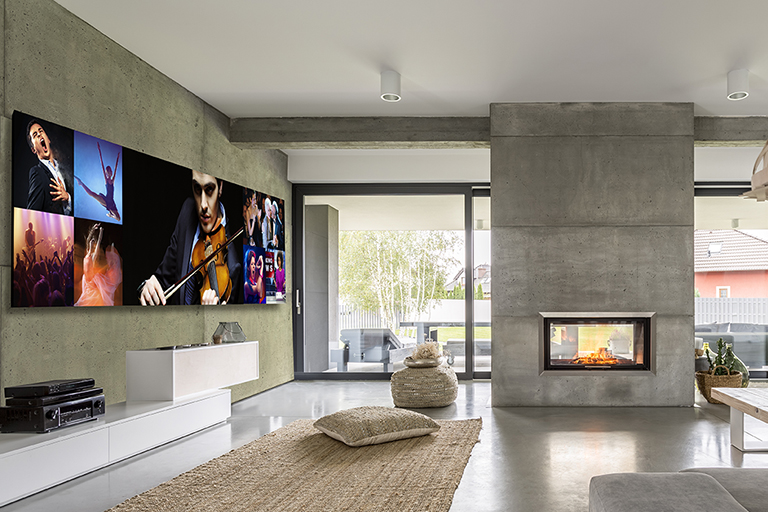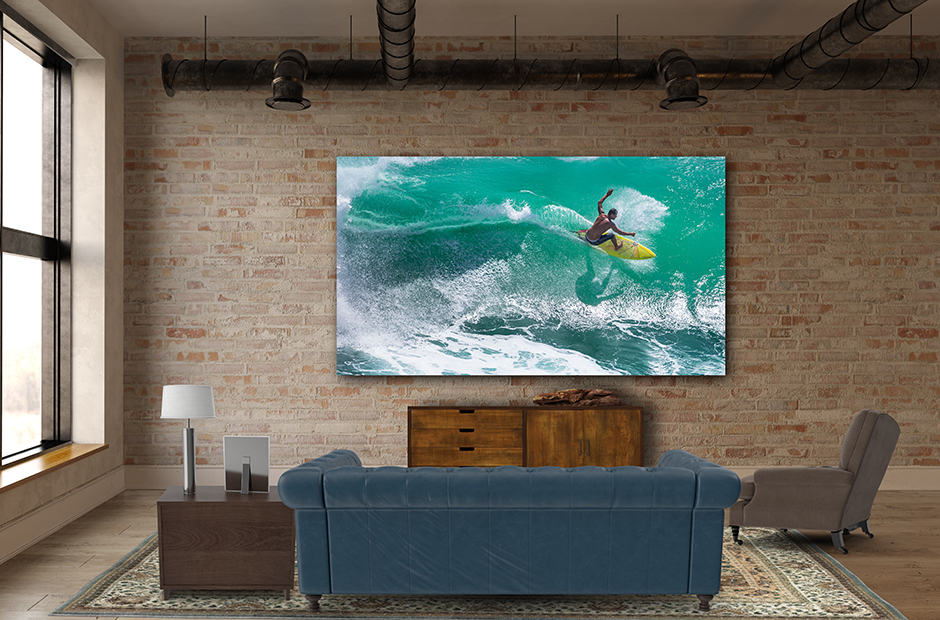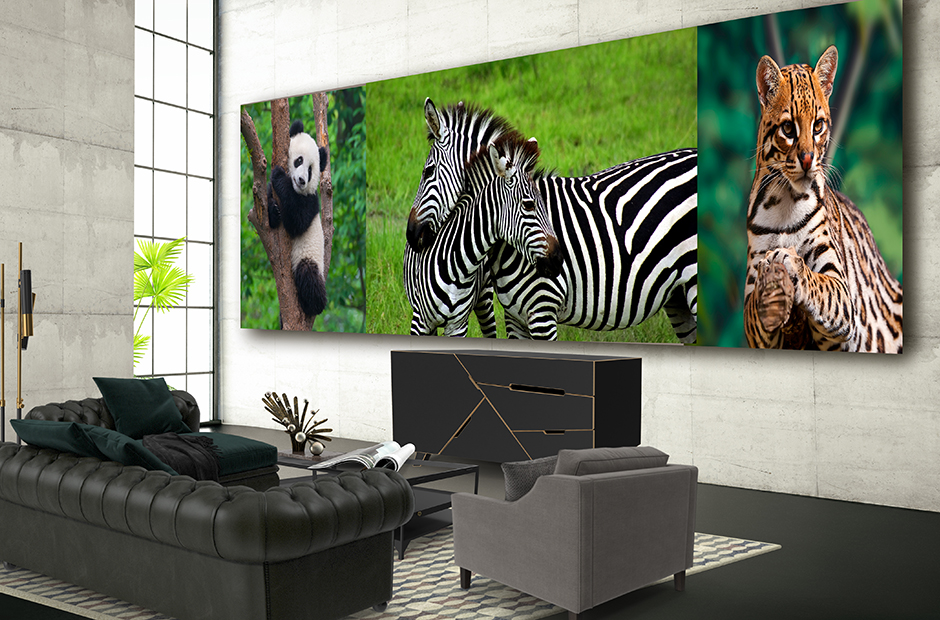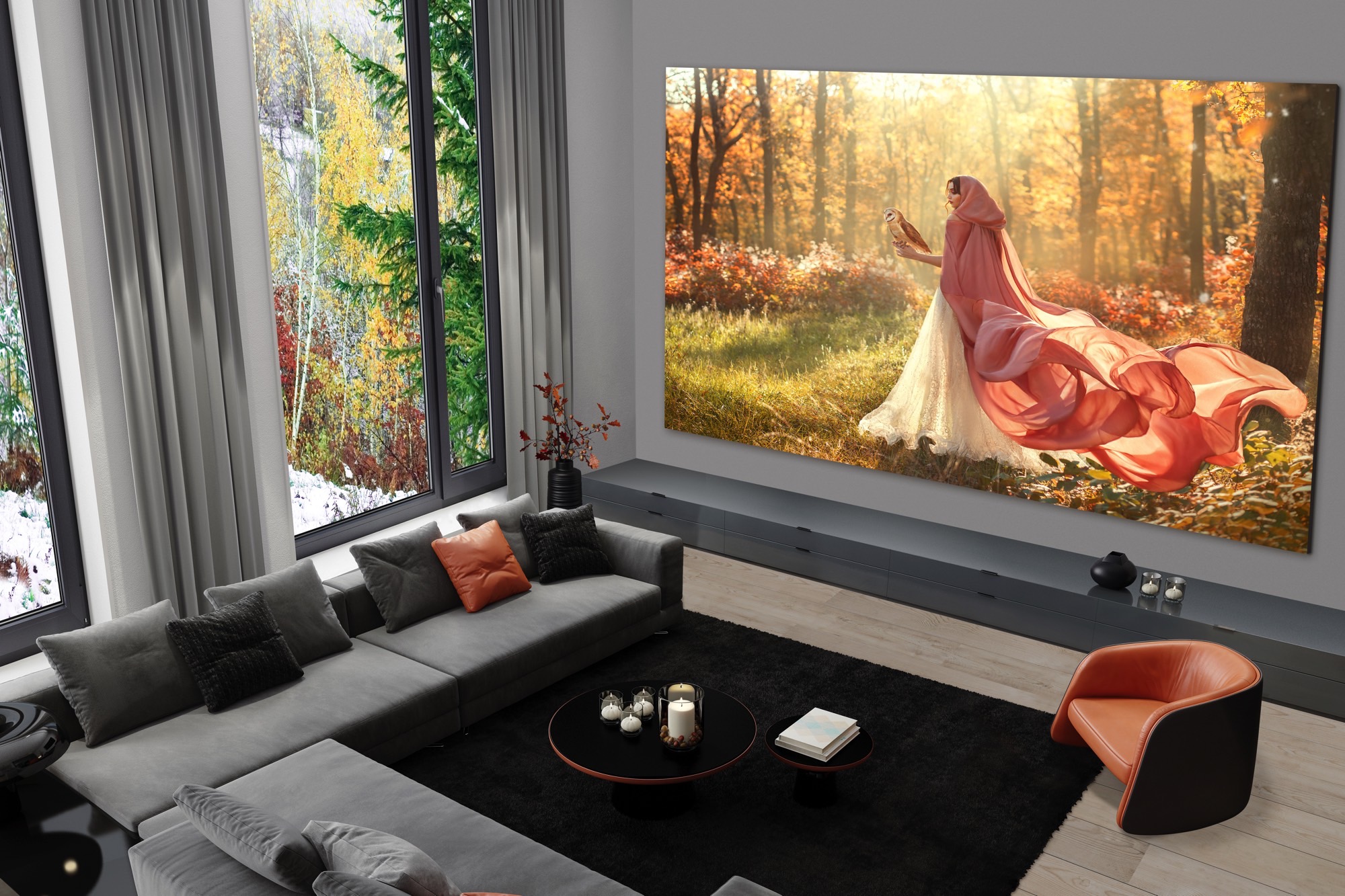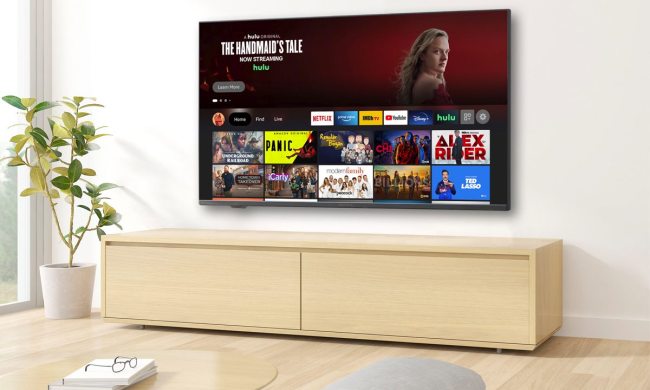If you’ve got a hankering for a huge TV and you have a correspondingly huge budget, you now have a new option: LG’s new line of LG DVLED Extreme Home Cinema TVs are available in sizes ranging from a mild 81-inches all the way up to a gigantic 325 inches. LG’s prices are equally gargantuan: You’ll pay $70,000 for the smallest model, but the biggest model is exponentially more expensive at $1,700,000 — about three times the price of the SF90, the most powerful Ferrari road car ever produced. If those numbers don’t faze you, you can order your DVLED Extreme Home Cinema model starting today.
The TVs use direct-view LED (DVLED) technology, similar to the kind used by Samsung’s The Wall and Sony’s Crystal LED displays, where individual microLEDs are used for each pixel, offering many of the self-illuminating advantages of OLED TVs, but with greater brightness, more colors, ultrawide viewing angles, and of course, huge screen sizes. Unlike regular LG TVs, the DVLED Extreme Home Cinema are aimed at the high-end luxury home market, so they won’t be sold in regular retail locations. Instead, these displays are available exclusively through a custom installation dealer program.
As with Samsung’s The Wall, LG’s DVLED TVs can be ordered in a variety of sizes, resolutions, and aspect ratios. While 16:9 is the ratio for most TVs, LG is also offering what it calls “UltraStretch” — a 32:9 aspect ratio that can be used to display multiple video sources simultaneously without distorting the original material. Depending on the size and shape, these displays incorporate anywhere from 2 million to 33 million individual diodes and can achieve resolutions from 2K to 8K. There are a total of 30 size and shape options.

“This truly is the supercar of home display technologies,” said Dan Smith, LG Electronics USA’s vice president in charge of DVLED displays, in a press release, “offering hand-constructed quality and performance that appeals to those with luxury lifestyles who want something that is not only immersive, but also highly exclusive. LG DVLED Extreme Home Cinema Display technology is rated to last 100,000 hours before reaching half-life, meaning that it could deliver stunning visuals for over 10 years.”
Installations of the LG DVLED Extreme Home Cinema Displays include customer support assistance, twice-yearly LG on-site health check visits for three years, an LG Connected Care software subscription that lets your installer remotely monitor your system’s performance, and a five-year limited warranty on every display. And just in case you decide to move your cinematic “monsterpiece” from your primary residence to your country estate, LG ships each Extreme Home Cinema Display in its own set of flight cases that would look right at home if you found them backstage at an Aerosmith concert.
Despite their impressive brightness (most models can output 1,200 nits) and support for HDR10, these TVs don’t support Dolby Vision or HDR10+, the two leading dynamic HDR formats. As with The Wall, LG’s DVLED displays are also surprisingly low-resolution considering their massive size. The smallest models can only deliver 2K resolution, even at sizes up to 196 inches. If you want 4K, you’ll need to spring for a minimum of 163 inches. Only the biggest of the models — the 325-inch giant — is capable of 8K resolution. And when we say giant, we mean it. The 325-inch model weighs 2,222 pounds, consumes up to 16,560 watts of energy, and produces 56,593 BTUs per hour. To put that in perspective, a Weber Genesis II S-435 gas grill produces only 48,000 BTUs per hour.
As big as LG’s DVLED displays can get, it has a long way to go if it wants to unseat Samsung as the reigning champ for huge TV sizes. In 2020, Samsung announced that it would produce its The Wall microLED TVs in sizes up to 583 inches, which it will aim at the business market.
